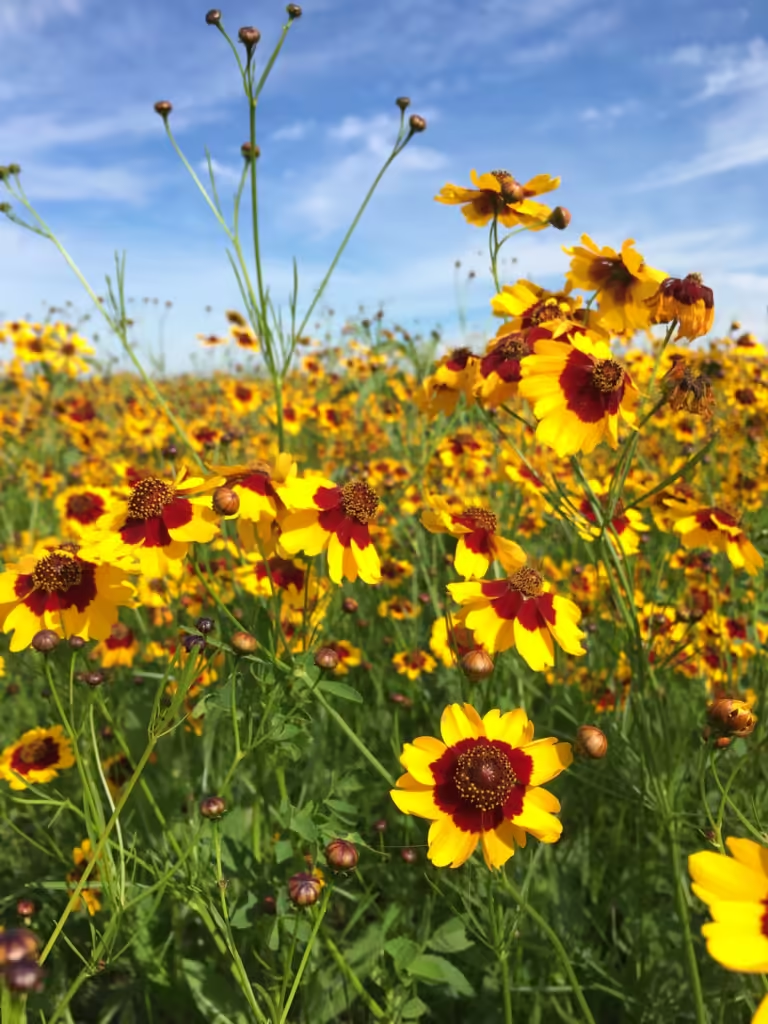Coreopsis tinctoria

Plains Coreopsis, also known as golden tickseed or calliopsis, is an annual wildflower native to North America. It has a wide native range, from the Gulf Coast of Texas of the South, to the the Dakotas, and even as far west as central Washington and into Canada. Its bright yellow petals with maroon centers feed over twenty species of pollinators and add vibrant color to gardens and natural landscapes.
Scientific Classification
- Kingdom: Plantae
- Order: Asterales
- Family: Asteraceae
- Genus: Coreopsis
- Species: C. tinctoria
Gardening Information
- Growth Habit: This upright annual reaches heights of 1 to 3 feet.
- Sunlight: Prefers full sun but tolerates partial shade.
- Soil: Thrives in well-drained soils and adapts to various soil types, including sandy and loamy soils.
- Watering: Exhibits drought tolerance once established.
- Maintenance: Minimal; deadheading spent blooms can encourage prolonged flowering.
Ecological Benefits & Wildlife Interactions
Plains Coreopsis is crucial for over twenty species of pollinating insects
- Pollinators: Attracts bees, butterflies, and other beneficial insects seeking nectar and pollen.
- Birds: Seeds provide a food source for birds, especially in late summer and fall.
- Beneficial Insects: Supports predatory insects that help control garden pests.
- Host Plant: Serves as a larval host for certain moth species, including the wavy-lined emerald moth (Synchlora aerata).
- Deer and Rabbits: Generally resistant to browsing by deer and rabbits.
Cultural & Medicinal Uses
This plant was medicinally used to treat diarrhea and internal pains. The plant was used to produce yellow and red dyes.
Planting Plains Coreopsis in your garden not only brings a burst of vibrant beauty but also plays a vital role in boosting local biodiversity. By offering nectar, pollen, and seeds, this wildflower creates a lifeline for pollinators, birds, and other wildlife, turning your garden into a thriving, interconnected habitat.